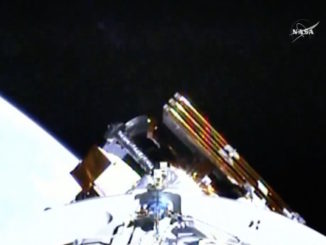How Starlink Satellites Are Reshaping Global Connectivity
Starlink satellites have transformed the way we think about global internet coverage. As SpaceX continues to expand its constellation, millions are gaining access to fast and reliable connectivity in remote and underserved regions. In this article, we dive into how Starlink satellites work, recent developments in the satellite internet landscape, and what the future holds for global broadband delivered from space.

What Are Starlink Satellites?
Starlink satellites are part of SpaceX's ambitious project to provide high-speed, low-latency internet anywhere in the world. Instead of relying on ground-based infrastructure, Starlink uses a growing network of small satellites orbiting in low Earth orbit (LEO). This positioning reduces signal delay and offers coverage far beyond what traditional fiber or cable can reach.
By early 2025, SpaceX had deployed more than 4,600 Starlink satellites. Users connect via compact ground terminals, making broadband accessible whether they're on a remote farm, a research vessel, or deep in the mountains.
Starlink and the Competitive Satellite Internet Race
SpaceX isn't alone in the quest to blanket the Earth with internet coverage. Amazon recently launched its Project Kuiper satellites, aiming to compete directly with Starlink. According to Space.com, the pace of launches has accelerated, with multiple rockets delivering new satellites from SpaceX, Amazon, and international providers in just a single day.
Amazon’s Project Kuiper intends to deploy over 3,200 satellites as a rival to Starlink. Both companies use LEO to minimize data transmission delays. However, Starlink enjoys a significant lead, making it harder for latecomers to catch up. A recent CNN analysis notes that the cost and complexity of building these massive constellations are challenging even for technology giants.
Recent Milestones and Space Launch Records
The competition among satellite internet providers has led to record-breaking launches. In April 2025, six rockets carried satellites to orbit within just 17.5 hours, marking the busiest period for rocket launches in history. Many of these missions were dedicated to expanding broadband megaconstellations like Starlink and Kuiper.
This rapid deployment means that users are already experiencing the benefits. Remote schools, hospitals, and first responders are online in places that previously had little or no connectivity. Starlink satellites are also providing essential communications in conflict zones and disaster areas, proving the importance of resilient space-based networks.
Challenges of Building Satellite Megaconstellations
While the opportunities are enormous, maintaining and scaling a constellation like Starlink is no small feat. Costs are high, technical issues arise frequently, and coordination with global regulatory bodies is ongoing. New competitors, such as Amazon's Project Kuiper, must overcome these hurdles to rival Starlink's operational scale.
There are also concerns about congestion in low Earth orbit and the long-term effects of so many satellites. Experts are working on collision avoidance systems and better orbital debris management to mitigate risks.
The Future of Starlink Satellites and Global Internet
With each new launch, Starlink brings fast, reliable internet closer to every part of the globe. The technology continues to mature, with improvements in antenna design, satellite communications, and ground infrastructure. As competitors like Amazon ramp up their efforts, consumers can look forward to more choice and better service in the satellite internet market.
If you want to learn more about Project Kuiper's growth and the evolving competition, check out this Spaceflight Now coverage of recent satellite launches.
Conclusion
Starlink satellites have sparked a revolution in how the world connects, enabling remote access to the digital economy and bridging the digital divide. With more launches on the horizon and new players entering the field, the global satellite internet race promises to deliver transformative benefits—and fresh challenges—for years to come.